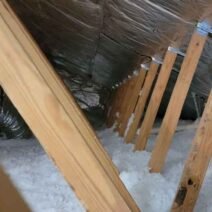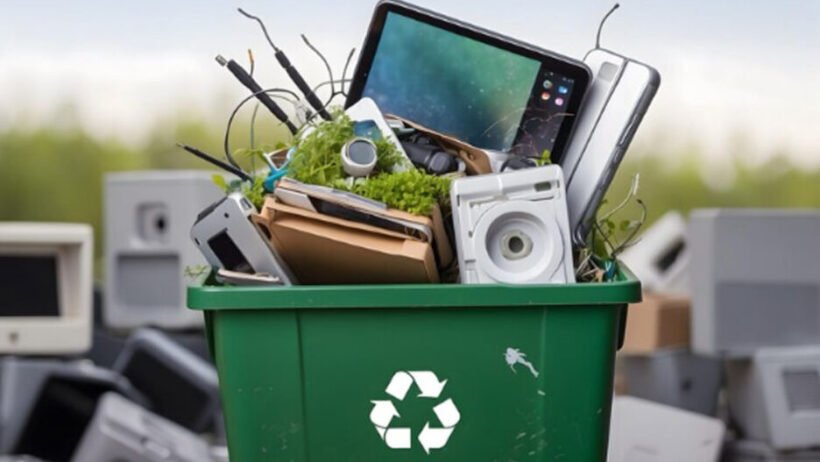Introduction
Due to developing technology, we utilise electronic gadgets daily. Mobile phones are used for communication, PCs for business, TVs for entertainment, and gadgets for convenience. This convenience raises a question: what happens to these gadgets when they’re no longer useful? A million tonnes of obsolete or broken gadgets are discarded annually. One of the fastest-growing categories of waste is e-waste. E-waste is a unique waste which includes valuable metals, recyclable parts, and toxic substances.
Disposing these risky materials in the ground can damage the air, water, and soil and endanger people’s health. Repercussions affect ecosystems, communities, and worldwide environmental issues. First, learn what happens when e-waste isn’t properly disposed of to prevent irreparable damage to our world and future.
What Lies Beneath: The Complex Composition of E-Waste
The slick looks of contemporary technologies frequently obscure what they really are. There are a lot of circuits, cables, capacitors, and microchips within any smartphone, computer, or appliance. These parts are constructed of different materials, and each one has a job to do.
Gold is utilised because it conducts electricity well and doesn’t rust, whereas copper transports electrical currents well. Touchscreens, speakers, and batteries all need rare earth elements to work. Plastics are used to insulate and support structures. But there are other compounds that may be quite harmful to the environment when they are released. Solder has lead in it, certain light bulbs have mercury in them, batteries have cadmium in them, and older semiconductors have arsenic in them.
E-waste is both a chance to get precious resources back and a potential environmental concern if it isn’t handled properly since it contains both valuable and toxic compounds. The issue is that a lot of this garbage is still being handled in dangerous or informal ways, especially in countries where recycling isn’t very good. A small skip is the perfect solution for quick and convenient waste removal on smaller projects.
Environmental Pollution: A Silent but Persistent Threat
The parts of e-waste that are bad for the environment break down in landfills or open places. Chemicals and metals stay in the ground for years or even decades. These harmful substances can get into surrounding streams, rivers, and groundwater reserves when it rains.
It’s scary because e-waste pollution is hard to control. Toxicity can go from dumpsites to fields and drinking water. Contaminants get into the food chain through the roots of plants.
It’s considerably more risky to burn e-waste in the open. People who recycle informally burn circuit boards and cables to get metals back. The dioxins and furans that are produced can damage the immune system, the reproductive system, and cause cancer. Air pollution makes soil and water dirty, which makes long-term pollution worse.
How E-Waste Contributes to Climate Change
It may not seem like throwing out e-waste the wrong way has anything to do with global warming, yet the link is stronger than most people think. A lot of appliances have refrigerants and insulating foams in them that are really bad for the environment. When these chemicals are let go, they hold heat in the air far better than carbon dioxide does.
Also, when valuable metals aren’t taken out of old devices, new raw materials have to be mined and processed. Mining and refining need a lot of energy, which adds a lot to carbon emissions. We make the environment situation worse by not recycling e-waste correctly, which makes these procedures more in demand.
Wasting a Fortune: The Economic Cost of Improper Disposal
People sometimes call e-waste an “urban mine” because it has rich metals in it. You can get more gold from a tonne of old cell phones than from a tonne of gold mined from the ground. We not only lose the resources when we toss these things away, but we also lose the chance to utilise them again.
Improper disposal of e-waste costs the world economy billions of dollars every year. Recycling these minerals might cut down on the demand for new mines, minimise manufacturing costs for manufacturers, and create jobs in the recycling business. But if we don’t have good mechanisms for collecting and recycling these resources, we’ll lose most of them permanently.
Impact on Wildlife and Biodiversity
More than individuals suffer from e-waste. Hazardous e-waste chemicals endanger wildlife and ecosystems. Heavy metals and other pollution destroy aquatic animals. The food chain is poisoned by these toxins in animals, which damage birds, larger fish, and mammals.
Drinking or eating poisoned plants or water can make land animals unwell, produce fewer offspring, or die. Animals are forced to relocate by illegal dumping sites, reducing biodiversity. Environmental imbalances can result from sensitive species becoming extinct in extreme conditions.
The Rise and Risk of Informal Recycling
Most e-waste is recycled in the informal sector in underdeveloped countries. People and small groups gather obsolete equipment from homes, dumps, and the street. They take these equipment apart in improvised workshops and use simple tools to get the metals out.
These actions are dangerous and bad for the environment, yet they make a lot of people rich. Getting gold by burning copper wires or soaking circuit boards in acid puts dangerous chemicals into the air and water. Every day, workers are exposed to dangerous substances that pollute the air and water and hurt other people.
Moving Toward Sustainable Solutions
We need to work together in many ways to deal with e-waste. There should be severe rules for collecting and recycling e-waste that governments make. Manufacturers ought to create safe, recyclable goods. People may learn how to securely throw away their electronics and the dangers of e-waste contamination through public education.
We need to pay for advanced recycling processes. Certified recycling centres can take apart equipment securely, get valuable materials back, and get rid of harmful waste properly. A circular economy that repairs, reuses, and recycles can help cut down on electronic waste.
Conclusion
Disposing of e-waste improperly harms our air, water, and soil, harms communities, wastes resources, disrupts ecosystems, and worsens climate change. It is costly to do nothing today and for future generations to inherit our world. But the outcome remains uncertain. We can change this situation by recycling electronics through safe, certified routes, encouraging makers of durable, easy-to-fix equipment, and demanding stronger waste management standards. All technology users are accountable, not only governments and enterprises. Whether we toss away e-waste carelessly or carefully will determine whether it becomes a story of unthinking consumerism or lasting global collaboration and growth.







